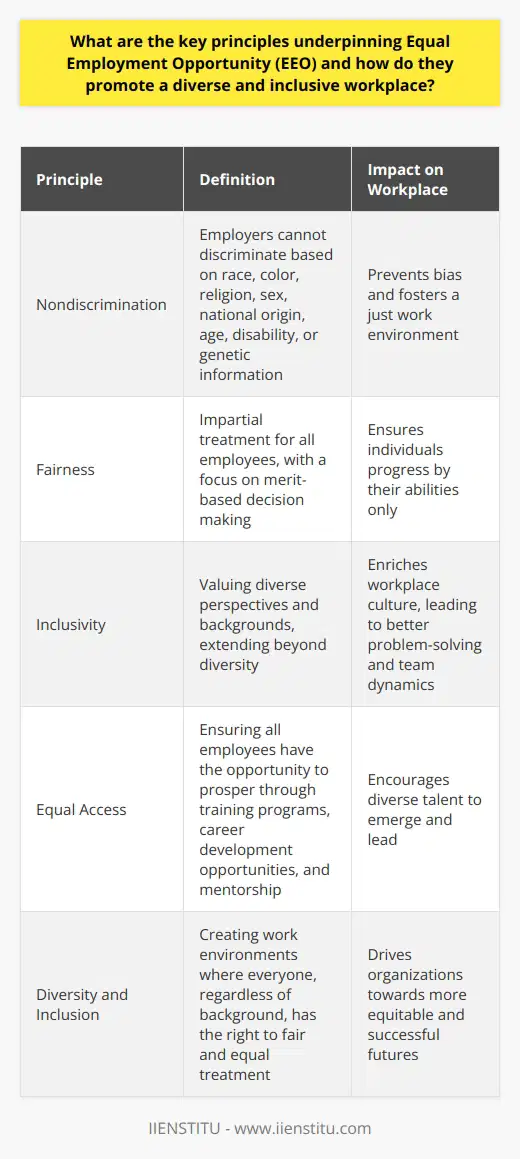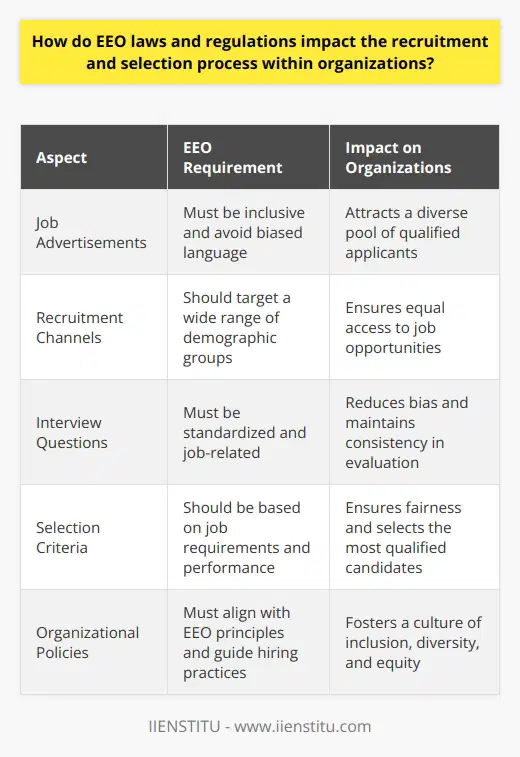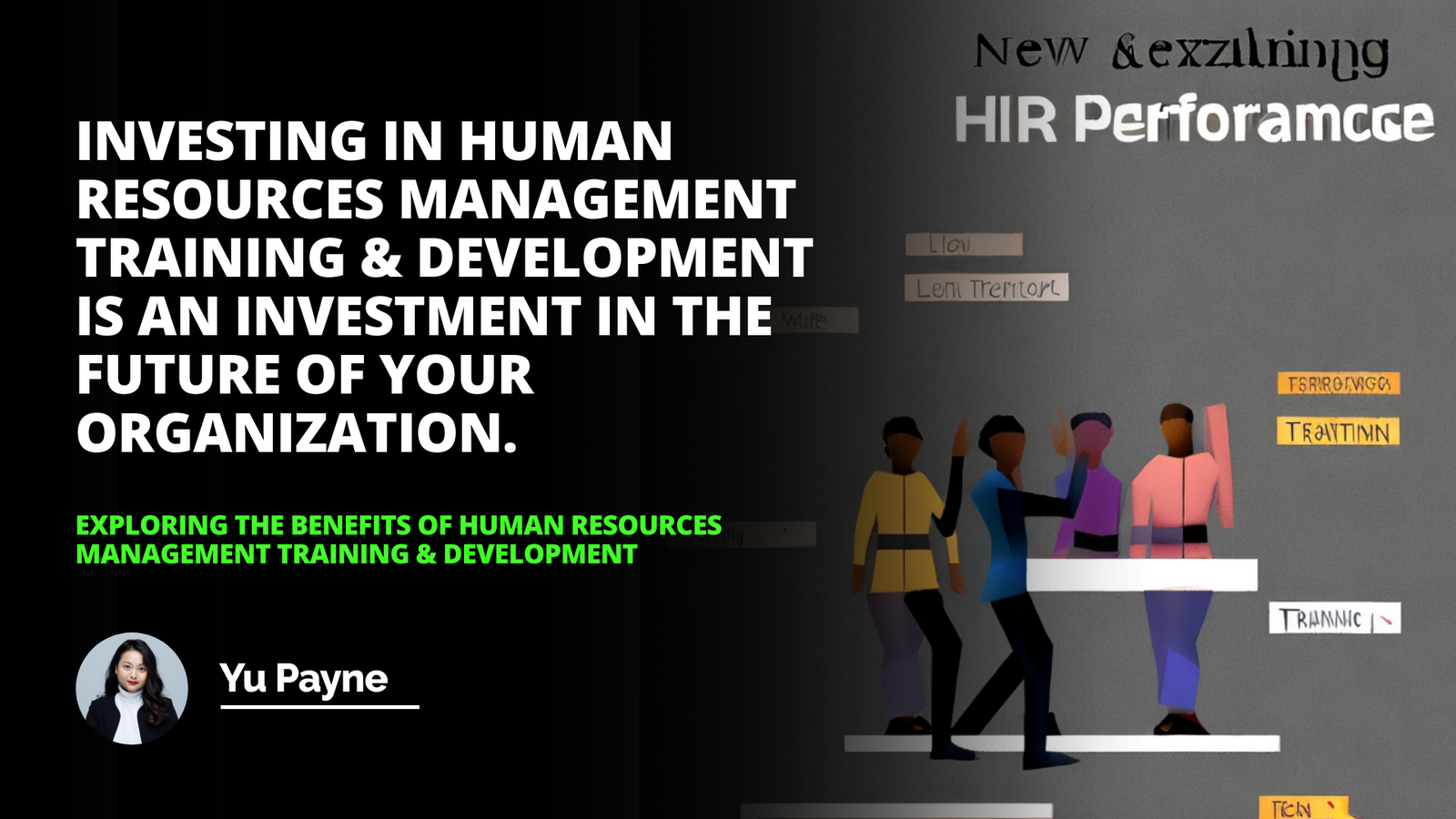
Within the domain of human resources and organizational management, the principle of Equal Employment Opportunity (EEO) plays a pivotal role in sculpting an ethical, inclusive, and productive workplace. At its core, EEO embodies the fair treatment of all individuals within the employment context, regardless of race, color, religion, sex, national origin, age, disability, or genetic information. Strides in achieving an unbiased work environment have come a long way since the activism of the civil rights era, encapsulating both moral imperatives and legislative compulsion.
The significance of EEO stems from a fundamental desire for social justice as well as the practical recognition that diverse perspectives and fair treatment facilitate a thriving organizational culture. In our constantly evolving business landscape, EEO is not merely a statutory obligation but a strategic imperative that any contemporary organization must embrace to ensure sustainable success and to attract the best talent from all walks of life. The pursuit of EEO within the workplace embodies a vision where each individual possesses an equal chance to contribute, advance, and reap the rewards of their professionalism and dedication.
The advent of EEO dates back to pivotal legislative efforts in the mid-twentieth century, designed to eradicate the systemic discrimination that was once commonplace in employment practices. Initial steps towards such an inclusive approach were largely influenced by social justice movements that advocated for the civil rights of marginalized populations. Over time, the concept of EEO has expanded and refined, shaping into a comprehensive construct reinforced by a network of legal frameworks.
The Legal Framework Surrounding EEO
Federal laws governing EEO
The legal underpinnings of EEO are enshrined in various federal statutes, each targeting specific aspects of employment practices to prevent discrimination. Among the most significant is Title VII of the Civil Rights Act of 1964, which was a trailblazing measure that prohibited employment discrimination based on race, color, religion, sex, and national origin. It established a critical legal foundation for ensuring that workplaces began to reflect society’s commitment to equality.
Further expanding the scope of protected classes, The Americans with Disabilities Act (ADA) mandates alterations in the workplace, such as reasonable accommodations that enable employees with disabilities to perform their jobs effectively while safeguarding against unfair treatment. The incorporation of the ADA into the EEO landscape represented a concrete step towards inclusivity, promoting the full participation of disabled individuals in the workforce.
Another pivotal piece of legislation is The Age Discrimination in Employment Act (ADEA), aimed at defending workers 40 years of age and older from employment decisions predicated on age. This law confronts the biases against mature employees, ensuring that experience and skill are not overlooked due to unsubstantiated age-related stereotypes.
Role of the Equal Employment Opportunity Commission (EEOC)
The EEOC stands as the federal agency charged with the enforcement of the nation's EEO laws. Its mandates include oversight, investigation, and mediation of discrimination complaints, and it possesses the authority to file lawsuits against employers in defense of employee rights. The commission also plays a crucial role in educating both employers and employees about their rights and responsibilities under the EEO laws.
Individuals who believe they have been discriminated against can file a charge with the EEOC. The process for filing a claim entails a preliminary assessment, investigation, and, if necessary, a conciliation process to reach a voluntary agreement. In cases where conciliation fails, the EEOC retains the power to initiate legal action, manifesting its influential role in shaping fair employment practices.
Understanding Discrimination and Harassment in the Workplace
Forms of employment discrimination
Discrimination in the workplace presents itself in various disguises. Direct discrimination transpires when an individual is treated less favorably explicitly because of a personal characteristic protected by EEO laws. On the contrary, indirect discrimination may occur through policies or practices that appear neutral but disproportionately disadvantage a particular group. Both forms undermine the ethos of EEO, necessitating vigilant policies and remediation measures.
Disturbingly prevalent, harassment serves as another facet of workplace discrimination, manifesting through unwanted conduct that violates an individual's dignity or creates an intimidating, hostile, or degrading work environment. Closely aligned, victimization refers to punitive behavior directed at someone who has made or supported a complaint regarding unlawful discrimination, further eroding the integrity of a fair workplace.
Examples of discrimination and harassment cases
Historically, numerous cases have surfaced that elucidate the contours and consequences of EEO breaches. For instance, lawsuits involving refusal to hire candidates due to their race or gender have often drawn significant media attention and public scrutiny, underscoring the legal and social implications of such acts. Moreover, high-profile harassment cases have spotlighted the personal and professional devastation suffered by victims, also bringing to light organizational cultures that inadvertently facilitated such misconduct.
These incidents serve as powerful reminders of the consequences discrimination and harassment have on all parties involved. For organizations, the repercussions typically encompass legal penalties, damage to brand reputation, and disruptions to workplace morale and productivity. For individuals, the impacts of such experiences are profound and enduring, often entailing emotional distress and career setbacks.
The Role of Affirmative Action in EEO
Understanding the role of Affirmative Action
While EEO mandates non-discrimination, Affirmative Action (AA) goes a step further by requiring certain employers to take proactive measures to correct imbalances and enhance diversity within their workforces. AA programs may include actions such as targeted recruitment and internal audits, to ensure that minority groups are fairly represented and inequalities are actively addressed.
How Affirmative Action complements EEO initiatives
AA stands as a complement to EEO policies by promoting a more assertive approach to fostering diverse and equitable workplaces. It seeks to rectify not only present inequities but also historical patterns of discrimination that have left indelible marks on employment practices. Effective AA measures ensure that opportunities for employment and advancement are proactively extended to underrepresented individuals, nurturing an organizational culture that truly reflects the principles of equal opportunity.
Controversies and criticisms surrounding Affirmative Action
Nevertheless, Affirmative Action has been met with scrutiny and debate. Critics argue that it may promote reverse discrimination, potentially disadvantaging those who do not belong to specific minority groups. It raises complex ethical questions about balancing historical injustices against the rights of individuals in contemporary hiring practices. The ongoing discourse surrounding AA demonstrates the challenging nature of realizing EEO ideals in a nuanced world rife with diverse perspectives on justice and fairness.
Best Practices for Ensuring EEO in the Workplace
Organizational policies for fostering an equal opportunity workplace
Organizations must proactively implement policies that uphold EEO principles to create an unbiased and harmonious workplace. This often starts with a comprehensive EEO policy statement, clear anti-discrimination and harassment procedures, and a strong framework for addressing complaints. By codifying expectations and consequences, organizations send an unequivocal message that fairness is both valued and required.
Importance of diversity and inclusion initiatives
Furthermore, championing diversity and inclusion stands as another profound component of EEO best practices. These initiatives help in cultivating an environment where diverse perspectives are valued and the cultural richness of a varied workforce can flourish. By intentionally embedding inclusivity in organizational strategy, companies can leverage the full potential of their human capital.
Methods to prevent harassment and discrimination
Preventative measures against harassment and discrimination should include regular training programs aimed at both employees and management. These trainings often illuminate unconscious biases, educate on rights and responsibilities, and underscore the importance of allyship. Moreover, certificate courses online and hr certification programs can equip HR professionals with the skills necessary to navigate the complexities of EEO and to foster a welcoming workplace culture.
The Future of EEO
Challenges in maintaining EEO in the workplace
As the workplace continues to evolve, so too does the landscape of EEO. One of the prevailing challenges in upholding these principles is adapting to the rapid pace of social and legal change, which can reshape perceptions and redefine the boundaries of fairness. The emergence of new technologies and work arrangements also presents fresh dynamics that must be considered within the EEO framework.
New frontiers: Evolving definitions of protected classes
With ongoing societal progress, there emerges a broader array of individual identities seeking protection under EEO statutes, indicating new frontiers in the development of protected classes. As societal norms broaden to become more inclusive, employers must remain attentive to how these shifts influence their policies and practices to avoid unintentional exclusion or bias.
The potential impact of upcoming legislation on EEO
Legislation always holds the potential to significantly impact EEO practices. Anticipated changes or expansions in protective laws call for employers to be both informed and agile. By proactively engaging with these legislative trends, organizations can not only ensure compliance but can also position themselves as leaders in the cultivation of fair and equitable workplaces.
Conclusion: Promoting Equal Employment Opportunity for a Better Workplace
In sum, the imperative of fostering Equal Employment Opportunity within the workplace cannot be overstated. This article has traversed the foundational aspects of EEO, from its legal roots in landmark statutes to the practical measures organizations can adopt to realize an environment of fairness and inclusion. By revisiting the transformative role of the EEOC, analyzing the multifaceted nature of discrimination and harassment, and deciphering the complex relationship between EEO and Affirmative Action, we can appreciate the depth and breadth of this essential societal value.
As we peer into the future of EEO, it is evident that challenges persist. Yet, the promise of workplaces that respect and celebrate the diversity of the human spirit remains a stirring vision. For employers and employees alike, the journey towards achieving EEO is not merely about compliance, but about nurturing a culture wherein everyone can aspire to and reach their full potential. It is through the unwavering pursuit of these EEO core tenets that we shall forge ahead towards a more equitable, vibrant, and effective workplace landscape.
Frequently Asked Questions
What are the key principles underpinning Equal Employment Opportunity (EEO) and how do they promote a diverse and inclusive workplace?
Equal Employment Opportunity: Foundations and Impact
Understanding the Principles of EEO
Equal Employment Opportunity, or EEO, stands on certain key principles. These principles aim to ensure fairness and justice in the workplace. They include nondiscrimination, fairness, inclusivity, and equal access for all employees. Both private and public sectors abide by EEO principles.
Nondiscrimination: The Core of EEO
At EEO’s core lies nondiscrimination. It means employers cannot discriminate based on race, color, religion, sex, national origin, age, disability, or genetic information. All decisions, from hiring to promotions, must adhere to this principle. This prevents bias and fosters a just work environment.
Promoting Fairness Across All Levels
Fairness involves impartial treatment for all employees. The goal is merit-based decision making. Managers must focus on skills, experience, and performance. This ensures individuals progress by their abilities only.
Inclusivity Enriches Workplace Culture
Inclusivity extends beyond diversity. It involves valuing diverse perspectives and backgrounds. Workplaces become rich with a range of ideas and innovations. This cultural enrichment leads to better problem-solving and team dynamics.
Ensuring Equal Access for Professional Growth
Equal access encourages diverse talent to emerge and lead. EEO ensures that all employees have the opportunity to prosper. Training programs, career development opportunities, and mentorship are crucial. These resources must be accessible to everyone fairly.
How EEO Principles Foster Diversity and Inclusion
- Level the Playing Field: EEO's principles ensure that all employees get equal treatment. This creates a workplace where everyone can compete fairly.
- Reduce Implicit Bias: By focusing on objective criteria, EEO mitigates implicit biases. This shifts focus from stereotypes to skills and qualifications.
- Cultivate a Sense of Belonging: Inclusivity under EEO helps individuals feel valued. This sense of belonging can enhance employee engagement and satisfaction.
- Embrace Different Perspectives: Diverse workforces offer a variety of viewpoints. EEO fosters this diversity, which can lead to more creativity and innovation.
In conclusion, EEO is about creating work environments where everyone, regardless of background, has the right to fair and equal treatment. These principles set a sturdy foundation for diversity and inclusion, while also driving organizations towards more equitable and successful futures.

How do EEO laws and regulations impact the recruitment and selection process within organizations?
Understanding EEO in Recruitment and Selection
Equal Employment Opportunity (EEO) laws serve as the backbone for fair employment practices. These regulations aim to ensure all job applicants have equal chances during the recruitment and selection process. Organizations must align their hiring strategies with EEO principles. Doing so avoids discrimination and fosters diversity.
EEO Principles Govern Hiring Processes
EEO laws prohibit discrimination based on race, color, religion, sex, or national origin. They also cover age, disability, and veteran status. Recruiters must focus on a candidate's skills and qualifications. Personal characteristics should not influence decisions.
Recruitment Practices Under EEO Scrutiny
Job advertisements must reflect EEO compliance. They should welcome all qualified applicants. Recruiters use diverse channels to reach a broad audience. They must avoid language that implies bias or exclusion.
- Job listings remain neutral and inclusive.
- Outreach efforts target a range of demographic groups.
- Job fairs and recruitment agencies comply with EEO regulations.
Selection Procedures Under EEO Laws
Selection involves resume screening, interviews, and assessments. EEO laws require each step to be non-discriminatory. Questions about a candidate's protected characteristics are off-limits. Selection metrics must be relevant to job performance.
- Interviews use standardized questions.
- Criteria for selection remain job-related and consistent.
- Tests and assessments reflect the job's requirements.
EEO Compliance Shapes Organizational Policies
EEO laws necessitate clear policies in organizations. These guide recruiters and hiring managers. They ensure a fair process for all.
- Policies cover all stages from job posting to final selection.
- Training in EEO practices is mandatory for those involved in hiring.
- Documentation of the recruitment process aids in proving compliance.
Impact of EEO on Organizational Culture
EEO influences the workplace beyond hiring. It shapes organizational culture and employee relations. A fair selection process under EEO laws leads to diversity and equity. These attributes contribute to positive work environments.
- EEO fosters a culture of inclusion.
- Diversity within teams often boosts creativity and innovation.
- Equitable treatment results in higher employee satisfaction and loyalty.
Organizations that embrace EEO in recruitment and selection build strong reputations. They become employers of choice for top talent across diverse backgrounds. In this, EEO laws do not only serve as legal guidelines but as catalysts for organizational excellence.

How does the EEO complaint procedure work and what protective measures are in place for employees who raise or file complaints?
Understanding EEO Complaint Procedure
The Equal Employment Opportunity (EEO) complaint procedure is a federal process. It addresses discrimination complaints from federal employees and applicants. This procedure stands on the foundation of various laws. These laws protect against workplace discrimination.
Laws Behind EEO
Key laws include Title VII of the Civil Rights Act, the ADA, and ADEA. Title VII guards against discrimination based on race, color, religion, sex, and national origin. The ADA protects qualified individuals with disabilities. The ADEA protects individuals who are 40 years of age or older.
Filing an EEO Complaint
An aggrieved person must contact their agency's EEO office promptly. They have just 45 days from the day the discrimination occurred. The initial step is informal counseling. Here, a resolution to the issue seeks through conversation.
If counseling fails, the individual may file a formal complaint. The agency then reviews it. This review verifies if the claim meets regulatory requirements. If it does, an investigation follows.
Investigation and Beyond
An investigator gathers evidence. They interview witnesses and collect documents. Within 180 days, the investigation should conclude. The complainant may then ask for a hearing. The EEOC or an agency judge will preside.
Alternatively, one may opt for a final decision from the agency. This bypasses the hearing. The complainant can appeal this decision with the EEOC. Or, they may take it to federal court.
Measures for Protecting Employees
Protection is vital for those who file complaints. The law prohibits retaliation for participating in the EEO process. Retaliation includes firing, demotion, harassment, or any adverse treatment.
Mechanisms of Protection
Confidentiality is paramount. It applies during and after EEO proceedings. Training forms a core part. Agencies train staff on non-discrimination policies.
*Anti-retaliation policies are clear and proactive. They inform about consequences for failing to uphold protections. Oversight* by the EEOC ensures agencies adhere to anti-discrimination policies.
- Victims can report retaliation.
- Employers must act on these reports swiftly.
- Whistleblower protection laws may apply.
- Supportive measures might include counseling or leave.
Conclusion
The EEO complaint procedure is robust and comprehensive. It supports federal employees and applicants. The protective measures in place are both preventive and responsive. They secure a fair and just process for all.



